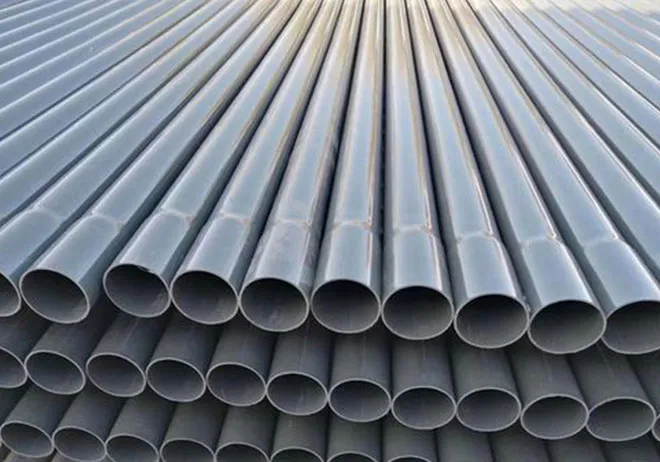Nov . 06, 2024 08:19 Back to list
High-Density Polyethylene Corrugated Drainage Pipe Solutions for Efficient Water Management
Understanding Corrugated HDPE Drain Pipes A Comprehensive Overview
Corrugated High-Density Polyethylene (HDPE) drain pipes have emerged as one of the most efficient solutions for effective drainage systems in a multitude of applications. This article aims to delve into the characteristics, advantages, applications, and installation practices associated with corrugated HDPE drain pipes, highlighting their significance in modern infrastructure.
What is Corrugated HDPE Drain Pipe?
Corrugated HDPE drain pipes are flexible, lightweight tubes made from high-density polyethylene resin. They have a distinct corrugated design, characterized by a series of grooves and ridges. This structure not only enhances strength and durability but also allows the pipe to bend without breaking, making it suitable for a variety of applications, from residential drainage systems to large-scale agricultural and industrial use.
Key Features and Advantages
1. Robust Strength and Durability The corrugated design of HDPE pipes provides excellent resistance against deformation under heavy loads. They are capable of withstanding harsh environmental conditions, corrosive soils, and a wide range of temperatures, which contributes to their longevity.
2. Lightweight and Flexible Unlike traditional concrete or metal pipes, HDPE pipes are significantly lighter and easier to handle. Their flexibility allows for easier installation in tight or irregular spaces, reducing labor costs and installation times.
3. Chemical Resistance HDPE is known for its high chemical resistance, meaning that these pipes will not corrode or degrade when exposed to various chemicals. This property makes them ideal for conveying stormwater and wastewater.
4. Cost-Effectiveness The combination of low material costs, reduced installation time, and minimal maintenance requirements makes corrugated HDPE pipes an economically sound choice. Their durability minimizes the need for replacements, further lowering long-term costs.
5. Environmentally Friendly As a recyclable material, HDPE supports sustainable practices. Many manufacturers also utilize recycled HDPE in their production processes, reducing the demand for virgin materials and lessening environmental impact.
Applications of Corrugated HDPE Drain Pipes
Corrugated HDPE drain pipes are utilized in a variety of applications across different sectors
corrugated hdpe drain pipe products

- Agricultural Drainage These pipes are commonly used in agricultural fields to manage excess water, ensuring optimal soil conditions for crop growth. - Stormwater Management They play a crucial role in urban stormwater drainage systems, efficiently directing rainwater away from roads and other surfaces, preventing flooding and erosion.
- Sewers and Wastewater Due to their chemical resistance, HDPE pipes are ideal for sewage applications, where they safely convey wastewater without risk of degradation
.- Landfill and Water Management In waste management facilities, HDPE pipes help manage leachate and methane gas, contributing to the overall efficiency and safety of landfill operations.
Installation Practices
To maximize the performance and longevity of corrugated HDPE drain pipes, careful consideration must be given during installation
1. Site Assessment Before installation, a thorough assessment of the site conditions is necessary. This includes soil type, drainage capacity, and existing structures to ensure optimal placement.
2. Correct Sizing It is vital to choose the appropriate diameter and length of the pipe based on the expected flow rates and drainage needs. Undersized pipes can lead to backups and flooding.
3. Proper Bedding A well-prepared bedding of sand or gravel is essential for providing support and facilitating water flow. This helps prevent damage and maintains the pipe’s structural integrity.
4. Jointing Techniques Proper techniques for joining sections of HDPE pipe are crucial. This can include the use of fittings or fusion welding to create leak-proof connections.
5. Regular Maintenance Although HDPE pipes are low-maintenance, periodic inspections can help identify potential blockages or damage, ensuring long-term efficiency.
Conclusion
Corrugated HDPE drain pipes represent a significant advancement in drainage technology, offering numerous benefits over traditional materials. Their robust construction, cost-effectiveness, and versatility make them an invaluable asset in managing water flow in various applications. By understanding their properties and proper installation practices, stakeholders can ensure effective drainage solutions that support sustainable development and infrastructure resilience.
-
High-Quality PVC Borehole Pipes Durable & Versatile Pipe Solutions
NewsJul.08,2025
-
High-Quality PVC Perforated Pipes for Efficient Drainage Leading Manufacturers & Factories
NewsJul.08,2025
-
High-Quality PVC Borehole Pipes Durable Pipe Solutions by Leading Manufacturer
NewsJul.08,2025
-
High-Quality PVC Borehole Pipes Reliable PVC Pipe Manufacturer Solutions
NewsJul.07,2025
-
High-Quality UPVC Drain Pipes Durable HDPE & Drain Pipe Solutions
NewsJul.07,2025
-
High-Quality Conduit Pipes & HDPE Conduit Fittings Manufacturer Reliable Factory Supply
NewsJul.06,2025

